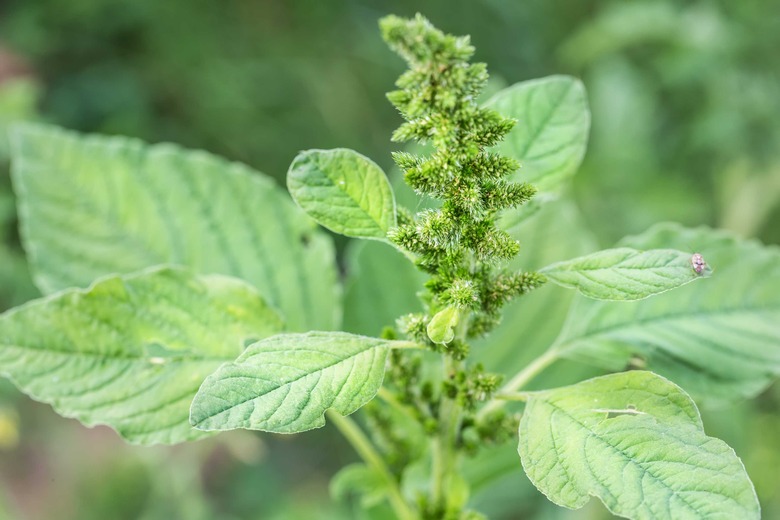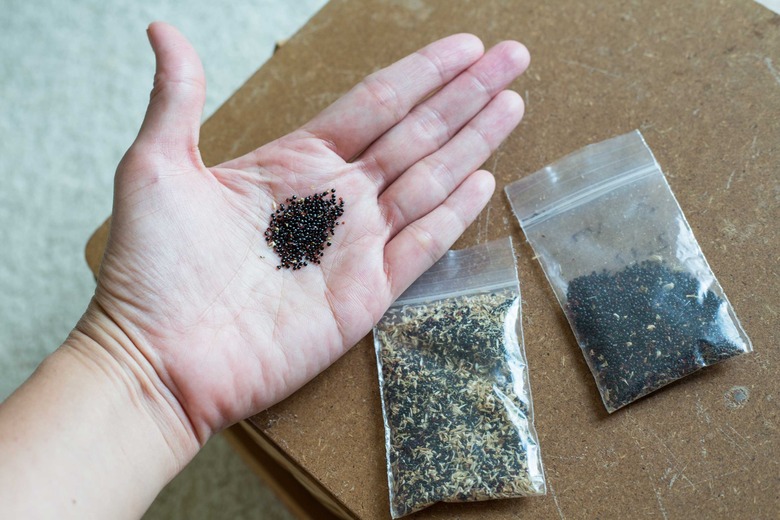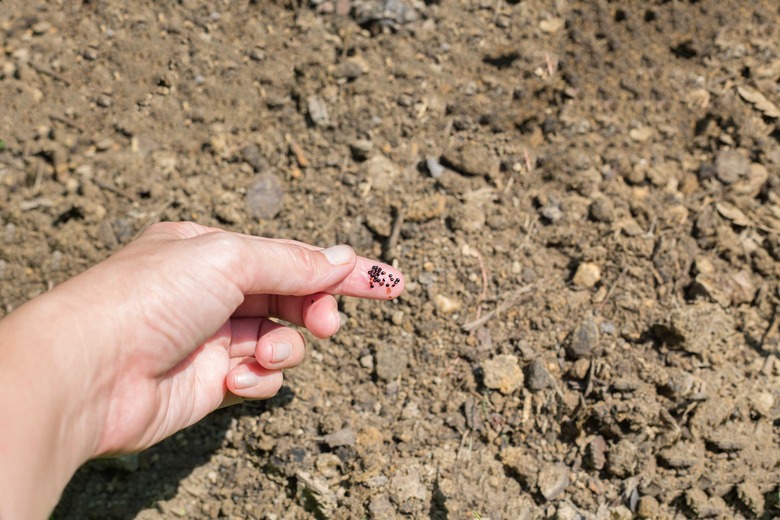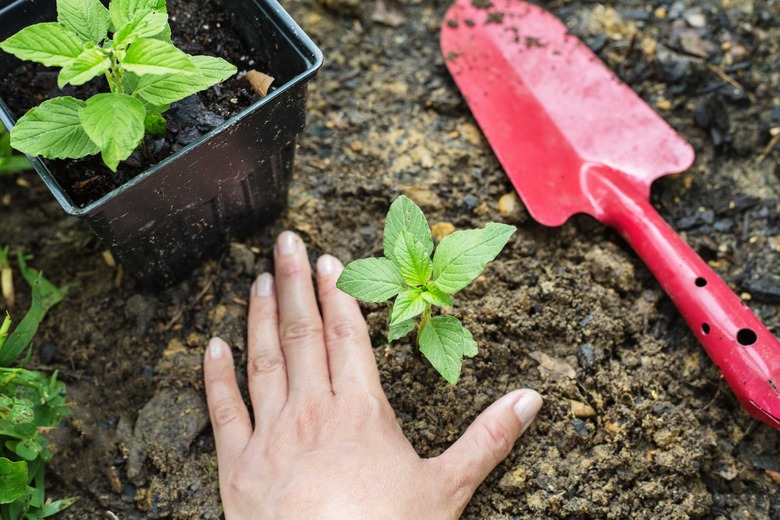How To Grow Callaloo Seeds
If a friend tells you she is going to enjoy callaloo, she may be referring to a stew popular in the Caribbean or a plant in the genus Amaranthus, native to Africa. Amaranth leaves are the main ingredient of callaloo, the stew, hence the name of the plant. The nutritious seeds are a flavorful grain. You can buy Amaranth seeds on the web or in many garden supply centers. How you plant and germinate them is the same for all species.
Selecting Seeds
Selecting Seeds
Make sure you buy the right kind of seeds. Home gardeners most often grow callaloo, red Amaranthus or "hot biscuits" amaranth (Amaranthus cruentus) for its seeds and edible leaves, while commercial farms in the Midwest more often grow grain amaranthus (Amaranthus hypochondriacus) for its seeds. Callaloo varieties come with black seeds or white seeds. The black seeds taste better and are softer than the white seeds that are grown for grain. All Amaranth species are annuals that you can grow in U.S. Department of Agriculture plant hardiness zones 2 through 11.
Considering Culinary Use
Considering Culinary Use
If you live in a temperate zone, young callaloo leaves are better for eating in soups, stews and stir-fries than those grown in warm, humid climates. Harvesting callaloo leaves slows their growth, so if you're after greens, consider sowing seeds for four or five plants to harvest leaves and let one plant mature to produce seeds for planting the next year. Black-seeded varieties will re-seed themselves the next year. There are no reports that the plant is invasive. If you're growing callaloo for their seeds, a square plot 10 feet on each side with white-seeded plants spaced every 12 inches should yield several pounds of seed.
Germinating Outdoors
Germinating Outdoors
It is not possible to give specific fertilizer requirements for all soils. A good general recommendation is to work 1 or 2 pounds of 10-5-10 or 12-6-12 slow-release fertilizer into the top 2 to 6 inches of 1,000 square feet of garden soil a few days before planting. Plant one or two callaloo seeds per inch 1/4- to 1/2-inch deep in rich, well-drained soil in full sun. Keep the seeds moist but not soaked and they should germinate in 10 to 21 days at a temperature of 65 to 75 degrees Fahrenheit. Callaloo seeds with black seeds are thickly branched and will grow up to 4 feet high, so thin them 24 to 36 inches apart. Since white-seeded varieties have fewer branches, thin them 1 to 2 feet apart. You typically do not have to water mature callaloo unless there is a drought. In extremely dry conditions, moisten the soil once or twice a week.
Germinating Indoors
Germinating Indoors
If you grow it for grain, callaloo needs a 110- to 150-day growing season. If you live in a cool climate, you might have to start the seeds indoors in germinating trays six to eight weeks before the last anticipated spring frost. Transplant seedlings outdoors when the weather warms. The outdoor planting depth and temperature are the same for indoor germination. Callaloo will grow better if you are able to sow it directly in the garden. The plants from callaloo seeds germinated indoors will be smaller, so you can transplant them more densely.
References
- Edible Plant Project: Callaloo
- USDA Natural Resources Conservation Service: Amaranthus Cruentus Red Amaranth
- Missouri Botanical Garden: Amaranthus Caudatus
- Mother Earth News: Amazing Amaranth
- Heirloom Organics: Amaranth
- University of Wisconsin Extension: Amaranth
- Planet Natural: Amazing Amaranth
- Texas A&M University Extension: Texas Home Vegetable Gardening Guide




